
A nest is a structure built for certain animals to hold eggs or young. Although nests are most closely associated with birds, members of all classes of vertebrates and some invertebrates construct nests. They may be composed of organic material such as twigs, grass, and leaves, or may be a simple depression in the ground, or a hole in a rock, tree, or building. Human-made materials, such as string, plastic, cloth, or paper, may also be used. Nests can be found in all types of habitat.

The Eurasian nuthatch or wood nuthatch is a small passerine bird found throughout the Palearctic and in Europe. Like other nuthatches, it is a short-tailed bird with a long bill, blue-grey upperparts and a black eye-stripe. It is a vocal bird with a repeated loud dwip call. There are more than 20 subspecies in three main groups; birds in the west of the range have orange-buff underparts and a white throat, those in Russia have whitish underparts, and those in the east have a similar appearance to European birds, but lack the white throat.

The yellow-bellied sapsucker is a medium-sized woodpecker that breeds in Canada and the northeastern United States.

The southern flying squirrel or the assapan is one of three species of the genus Glaucomys and one of three flying squirrel species found in North America. It is found in deciduous and mixed woods in the eastern half of North America, from southeastern Canada to Florida. Disjunct populations of this species have been recorded in the highlands of Mexico, Guatemala, and Honduras.

The northern flying squirrel is one of three species of the genus Glaucomys, the only flying squirrels found in North America. They are found in coniferous and mixed coniferous forests across much of Canada, from Alaska to Nova Scotia, and south to the mountains of North Carolina and west to Utah in the United States. They are light brown with pale underparts and grow to a length of 25 to 37 cm. They are proficient gliders but uncoordinated walkers on the ground. They feed on a variety of plant material as well as tree sap, fungi, insects, carrion, bird eggs and nestlings. They mostly breed once a year in a cavity lined with lichen or other soft material. Except when they have young, they change nests frequently, and in winter a number of individuals may huddle together in a shared nest. Unlike most members of their family, flying squirrels are strictly nocturnal.

The white-breasted nuthatch is a species of bird in the nuthatch family Sittidae. It is a medium-sized nuthatch, measuring approximately 15.5 cm (6.1 in) in length. Colouration varies somewhat along the species' range, but the upperparts are light blue-gray, with a black crown and nape in males, while females have a dark gray crown. The underparts are whitish, with a reddish tinge on the lower abdomen. The white-breasted nuthatch is a noisy bird. It has a nasal voice and often utters little cries or vocalizations, often composed of repetitions of small invariant whistles. In summer, it is an exclusively insectivorous bird, consuming a wide range of arthropods, but in winter its diet consists mainly of seeds. The nest is located in the cavity of a tree. The laying consists of five to nine eggs, incubated for two weeks by the female fed by the male, then the two adults feed the young until they fledge, and a few weeks after that.

The western gray squirrel is an arboreal rodent found along the western coast of the United States and Mexico. It is a tree squirrel. In some places, this species has also been known as the silver-gray squirrel, the California gray squirrel, the Oregon gray squirrel, the Columbian gray squirrel and the banner-tail. There are three geographical subspecies: Sciurus griseus griseus ; S. g. nigripes ; and S. g. anthonyi.

A bird nest is the spot in which a bird lays and incubates its eggs and raises its young. Although the term popularly refers to a specific structure made by the bird itself—such as the grassy cup nest of the American robin or Eurasian blackbird, or the elaborately woven hanging nest of the Montezuma oropendola or the village weaver—that is too restrictive a definition. For some species, a nest is simply a shallow depression made in sand; for others, it is the knot-hole left by a broken branch, a burrow dug into the ground, a chamber drilled into a tree, an enormous rotting pile of vegetation and earth, a shelf made of dried saliva or a mud dome with an entrance tunnel. The smallest bird nests are those of some hummingbirds, tiny cups which can be a mere 2 cm (0.8 in) across and 2–3 cm (0.8–1.2 in) high. At the other extreme, some nest mounds built by the dusky scrubfowl measure more than 11 m (36 ft) in diameter and stand nearly 5 m (16 ft) tall. The study of birds' nests is known as caliology.

The fox squirrel, also known as the eastern fox squirrel or Bryant's fox squirrel, is the largest species of tree squirrel native to North America. Despite the differences in size and coloration, it is sometimes mistaken for American red squirrels or eastern gray squirrels in areas where the species co-exist.
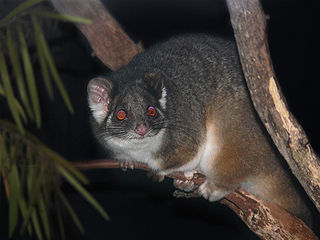
The common ringtail possum is an Australian marsupial. It lives in a variety of habitats and eats a variety of leaves of both native and introduced plants, as well as flowers, fruits and sap. This possum also consumes a special type of faeces that is produced during the daytime when it is resting in a nest. This behaviour is called caecotrophy and is similar to that seen in rabbits.

Abert's squirrel or the tassel-eared squirrel is a tree squirrel in the genus Sciurus native to the southern Rocky Mountains from the United States to the northern Sierra Madre Occidental of Mexico, with concentrations found in Arizona, New Mexico, and southwestern Colorado. It is closely associated with, and largely confined to, mature ponderosa pine forests. It is named in honor of the American naturalist John James Abert; nine subspecies are recognised. It is recognizable by its tufted ears, gray color, pale underparts and rufous patch on the lower back. The squirrel feeds on the seeds and cones of the Mexican pinyon and the ponderosa pine when they are available, but will also take fungi, buds, bark, and carrion. Breeding normally occurs in summer, with a spherical nest being built high in the canopy.
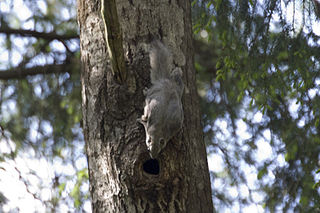
The Siberian flying squirrel is an Old World flying squirrel with a range from the Baltic Sea in the west to the Pacific Coast in the east. It is the only species of flying squirrel found in Europe. It is considered vulnerable within the European Union where it is now found only in Estonia, Finland and Latvia out of the 27 countries in the Union.
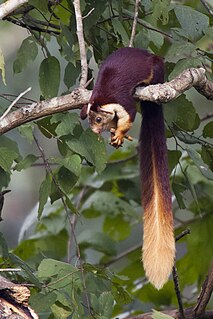
The Indian giant squirrel or Malabar giant squirrel is a large multi-coloured tree squirrel species endemic to forests and woodlands in India. It is a diurnal, arboreal, and mainly herbivorous squirrel.

The powerful owl, a species of owl native to south-eastern and eastern Australia, is the largest owl on the continent. It is found in coastal areas and in the Great Dividing Range, rarely more than 200 km (120 mi) inland. The IUCNRed List of Threatened Species also refers to this species as the powerful boobook. An apex predator in its narrow distribution, powerful owls are often opportunists, like most predators, but generally are dedicated to hunting arboreal mammals, in particular small to medium-sized marsupials. Such prey can comprise about three-quarters of their diet. Generally, this species lives in primary forests with tall, native trees, but can show some habitat flexibility when not nesting. The powerful owl is a typically territorial raptorial bird that maintains a large home range and has long intervals between egg-laying and hatching of clutches. Also, like many types of raptorial birds, they must survive a long stretch to independence in young owls after fledging. Unlike most raptorial birds, however, male powerful owls are larger and stronger than females, so the male takes the dominant position in the mating pair, which extends to food distribution.

The black-tailed tree rat, also called black-tailed acacia rat or black-tailed thallomys,, is a species of rodent in the family Muridae. It is found in Angola, Botswana, Namibia and South Africa, where its natural habitat is subtropical or tropical dry shrubland. It is both nocturnal and arboreal and makes bulky nests in the trees, often acacias, where it feeds on leaves and buds.
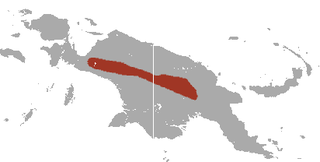
The pygmy ringtail possum is a species of marsupial in the family Pseudocheiridae. It is found in West Papua, Indonesia and Papua New Guinea in montane forest regions. They are "widespread along the Central Cordillera" and live at elevations between 1,500 and 3,600 metres above sea level.”

The western ringtail possum or ngwayir refers to a species of possum, Pseudocheirus occidentalis, found in a small area of Southwest Australia. They are a cat-sized marsupial with a stocky build, dark greyish-brown fur, pale underparts and a long prehensile tail with a whitish tip. Ngwayir forage at night through the upper canopy of trees, feeding on young leaves, flowers and fruit, especially in groves of the weeping peppermint Agonis flexuosa. Breeding occurs mainly during the winter, the single juvenile emerging from the pouch after about three months. The population has declined by more than 95% since British settlement, due to clearing of habitat, fire and the introduction of the red fox Vulpes vulpes, and is classified as Critically Endangered. The population in most areas has catastrophically declined or become locally extinct, but strongholds remain in the urbanised areas near Busselton and Albany.

The Japanese dwarf flying squirrel is one of two species of Old World flying squirrels in the genus Pteromys. It is native to Japan where it inhabits sub-alpine forests and boreal evergreen forests on Honshu and Kyushu islands. It grows to a length of 20 cm (8 in) and has a membrane connecting its wrists and ankles which enables it to glide from tree to tree. During the day this squirrel hides in a hole, usually in a coniferous tree, emerging at night to feed on buds, leaves, bark, fruits and seeds. This squirrel faces no particular threats, has a wide range and is relatively common and the International Union for Conservation of Nature lists it as a "least-concern species".
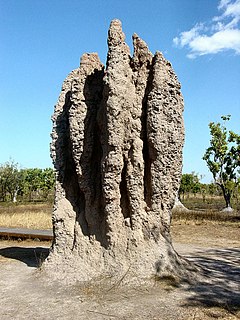
Structures built by animals, often called animal architecture, abound in nature. Examples of animal structures include termite mounds, wasp and beehives, burrow complexes of rodents, beaver dams, elaborate nests of birds, and webs of spiders.

Humboldt's flying squirrel is one of three species of the genus Glaucomys, the only flying squirrels found in North America.






















